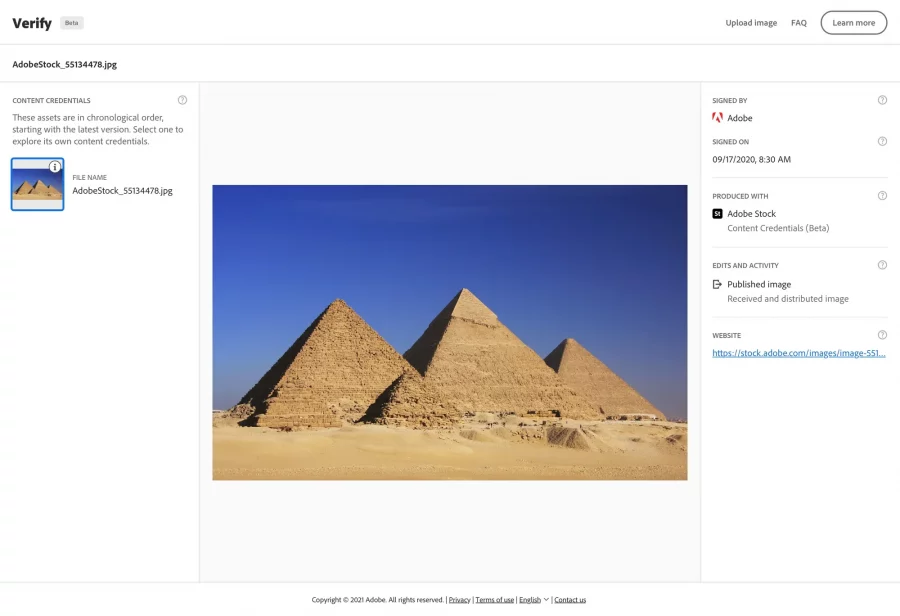Two years ago Adobe launched what it called the Content Authenticity Initiative which had the aim of combatting misinformation in images, but also helped creators protect their work.
On Tuesday Adobe launched Content Credentials which allows creators – especially those in the NFT space – to attribute content to themselves and helps those using the content to verify the artist made the work.
Content Credentials is currently available as a beta so the features may change before final release.
The first part of this is the ability to capture edits in Photoshop. Why would you want to do this? Well for one it can help prove that you created the artwork, but it could also help showcase changes to an original piece of content that has been used in a misinformation campaign for instance.
“When enabled, the feature captures edits and identity information from a working image. The creator can then attach this information to the image when exporting it. This secure metadata provides new transparency options for creative professionals and casual artists alike, while also reinforcing trust in digital content for people viewing it,” explains vice president at Adobe, Will Allen.
For now this feature is opt-in.
Stock assets downloaded from Adobe Stock will have their Content Credentials included in the file as you can see below.

The one that is perhaps most exciting is being able to link your social media profiles and cryptocurrency wallets to Photoshop? Why would you want to do that? Well if you happen to be selling NFTs, it might be a massive convenience for you.
“By adding your social media and wallet addresses to your Content Credentials you can further assure consumers that you are indeed the creator of your content. A crypto address is also useful if someone wishes to mint their work as crypto art. We’ve partnered with the NFT marketplaces KnownOrigin, OpenSea, Rarible, and SuperRare to display Content Credentials, thereby allowing collectors to see if the wallet used to create an asset was indeed the same one used to mint,” says Allen.
Further more, if Content Credentials are included in images uploaded to Behance, those details will be visible when viewing the image.
Hopefully this prevents ne’er-do-wells from stealing content and minting it as their own in order to sell it on.
This is great for creators and it’s a wonder that it took Adobe so long to implement a feature such as this.
In addition to its efforts, Allen says that Adobe is working on an open-source developer kit that any team could use to add Content Credentials to their product.
“Tamper-proof transparency around the origins and changes to content not only benefits creative ownership, but it also allows viewers to understand more about what they’re seeing on the internet and make more informed decisions. We’re providing information about what is real — as opposed to detecting or determining what is fake — and we look forward to a future where everyone expects to see provenance accompanying digital content,” adds the Adobe VP.
This is great news for creators and as Adobe says this is just the first phase of its efforts and it’s exploring ways to add this functionality to other apps in the Adobe Creative Cloud suite.

